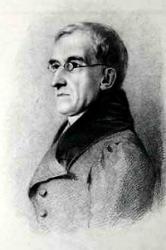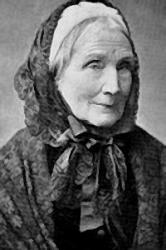Planning worship?
Check out our sister site, ZeteoSearch.org,
for 20+ additional resources related to your search.
- |
User Links
Person Results
Chester W. Greene
Person Name: C. W. Greene Composer of "[God might have made the earth bring forth]" in Carmina Centum
Chester W. Greene
George Frideric Handel

1685 - 1759 Person Name: G. F. Handel, 1685-1759 Composer of "SOLOMON" in The Sunday School Hymnary George Frideric Handel (b. Halle, Germany, 1685; d. London, England, 1759) became a musician and composer despite objections from his father, who wanted him to become a lawyer. Handel studied music with Zachau, organist at the Halle Cathedral, and became an accomplished violinist and keyboard performer. He traveled and studied in Italy for some time and then settled permanently in England in 1713. Although he wrote a large number of instrumental works, he is known mainly for his Italian operas, oratorios (including Messiah, 1741), various anthems for church and royal festivities, and organ concertos, which he interpolated into his oratorio performances. He composed only three hymn tunes, one of which (GOPSAL) still appears in some modern hymnals. A number of hymnal editors, including Lowell Mason, took themes from some of Handel's oratorios and turned them into hymn tunes; ANTIOCH is one example, long associated with “Joy to the World.”
Bert Polman
George Frideric Handel
William Horsley

1774 - 1858 Person Name: W. Horsley, Mus. Bac. Composer of "HORSLEY" in Worship Song Born: November 15, 1774, Mayfair, London, England.
Died: June 12, 1858, Kensington, London, England.
Buried: Kensal Green Cemetery, London, England.
Horsley studied music privately, then became organist of Ely Chapel, Holborn, London, in 1794. He assisted Dr. J. W. Callcott (who encouraged him in persevering at Glee-writing, at which he became successful) as organist of the Asylum for Female Orphans, and married Callcott’s daughter. He succeeded Callcott in 1802, holding that post 52 years. A difference of opinion with the Asylum Committee led to him being dismissed. In 1838 he also became organist of Charterhouse "at a salary of £70 and a room set apart and a fire provided when necessary for his use on those days upon which his duty requires his attendance at the Hospital." He founded the London Philharmonic Society, and in later years was a close friend of Felix Mendelssohn.
J. C. Horsley, the eminent painter, relates in his Reminiscences the following experience when he went with his father to one of the services:
"When I was four years old my father was organist to the Asylum for Female Orphans, which was a stately building on the Westminster Bridge Road; and one Sunday he took me in with him to the morning service and landed me in the organ-loft. Everything was new and surprising to me, especially the crowd of buxom girls, at least a hundred in number, all dressed alike, ranged right and left of the organ, and who, when the organ had played a bar or two of the opening hymn, sang out with open mouths and such energy that I was positively scared, and in continently accompanied the performance with a prolonged howl; upon which my father, continuing to play the accompaniment with one hand, supplied me promptly with paper out of his capacious pocket, where he always kept a store of backs of letters (envelopes were not invented then), and a silver pencil-case of heroic proportions, thus quieting me." Lightwood, pp. 171-72
--www.hymntime.com/tch/
William Horsley
Mary Botham Howitt

1799 - 1888 Person Name: Mary Howitt Author of "God might have made the earth bring forth" in Worship Song Howitt, Mary, née Botham, second daughter of Samuel Botham, a member of the Society of Friends, was born at Uttoxeter, Staffordshire, circa 1804, was married in 1823 to William Howitt, and died Jan. 30, 1888. Her publications have little in common with hymnody. They include poems, novels, translations of Swedish and Spanish works, and numerous contributions to magazines. In addition she was joint author with her husband of Literature and Romance of Northern Europe, 1852, &c. Her hymns include:—
1. God might have made the earth bring forth. The Use of Flowers. From her Birds and Flowers, and Other Country Things, Lond., N. D. (Preface, Sept. 28, 1837), p. 122, in 8 stanzas of 4 lines.
2. How goodly is the earth. Flower Services. From her Hymns and Fireside Verses, Lond., 1839, p. 167.
3. 0 spirit, freed from earth. Death and Burial. Altered from her poem, "The Ascent of the Spirit," in her Ballads and Other Poems, 1847, p. 318. Dr. Martineau dates this poem 1834.
Mrs. Howitt also contributed " Let me suffer, let me drain" (The Willing Disciple), and " Clothe me with Thy saving grace " (The Cry of the spirit) to Lyra Britannica, 1867.
-- John Julian, Dictionary of Hymnology
=============================
Howitt, Mary, p. 541, i. Her hymn “Let me suffer; let me drain," is the opening hymn of the Lays of the Sanctuary, 1859. She died Jan. 30, 1888.
--John Julian, Dictionary of Hymnology, Appendix, Part II (1907)
Mary Botham Howitt


 My Starred Hymns
My Starred Hymns


